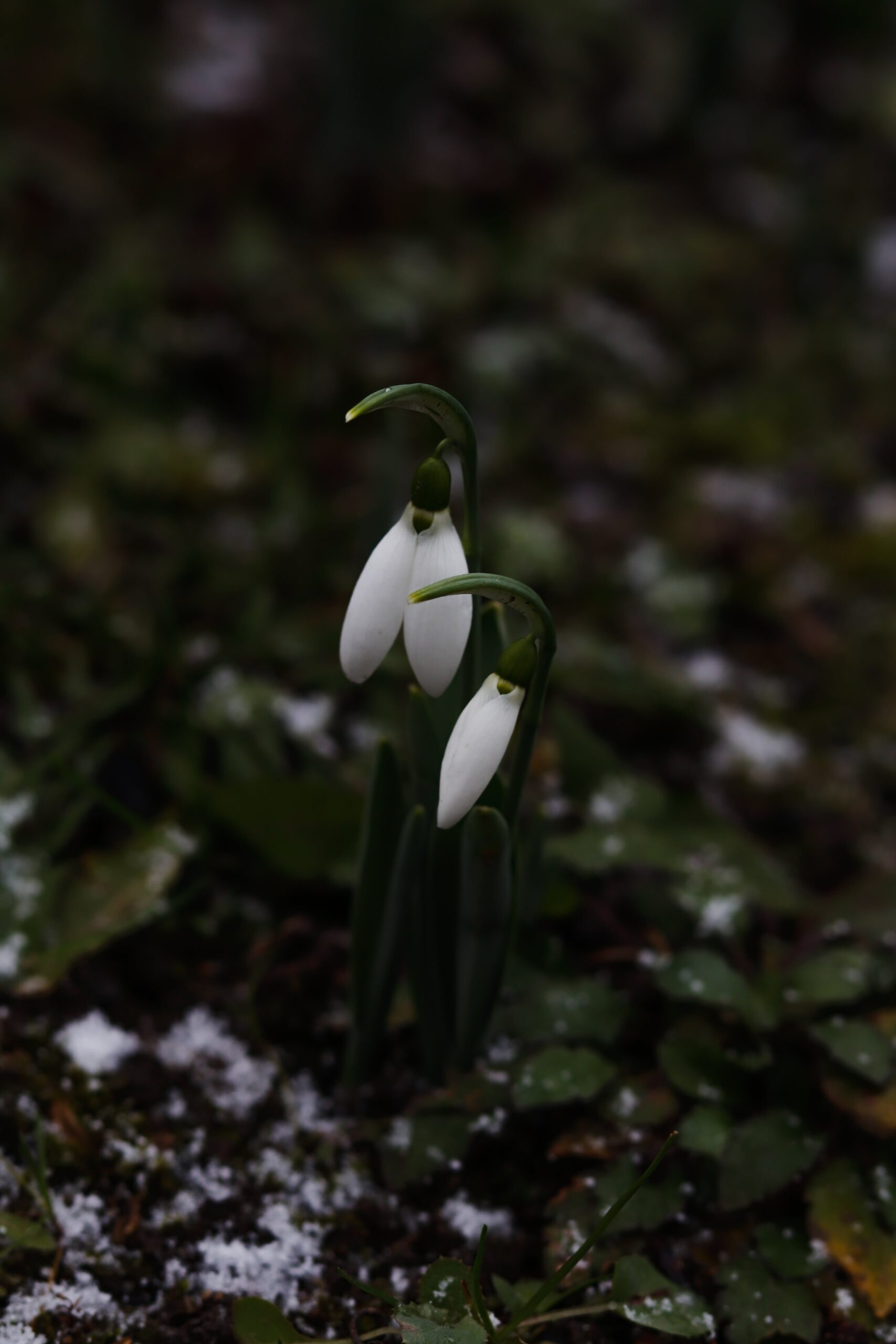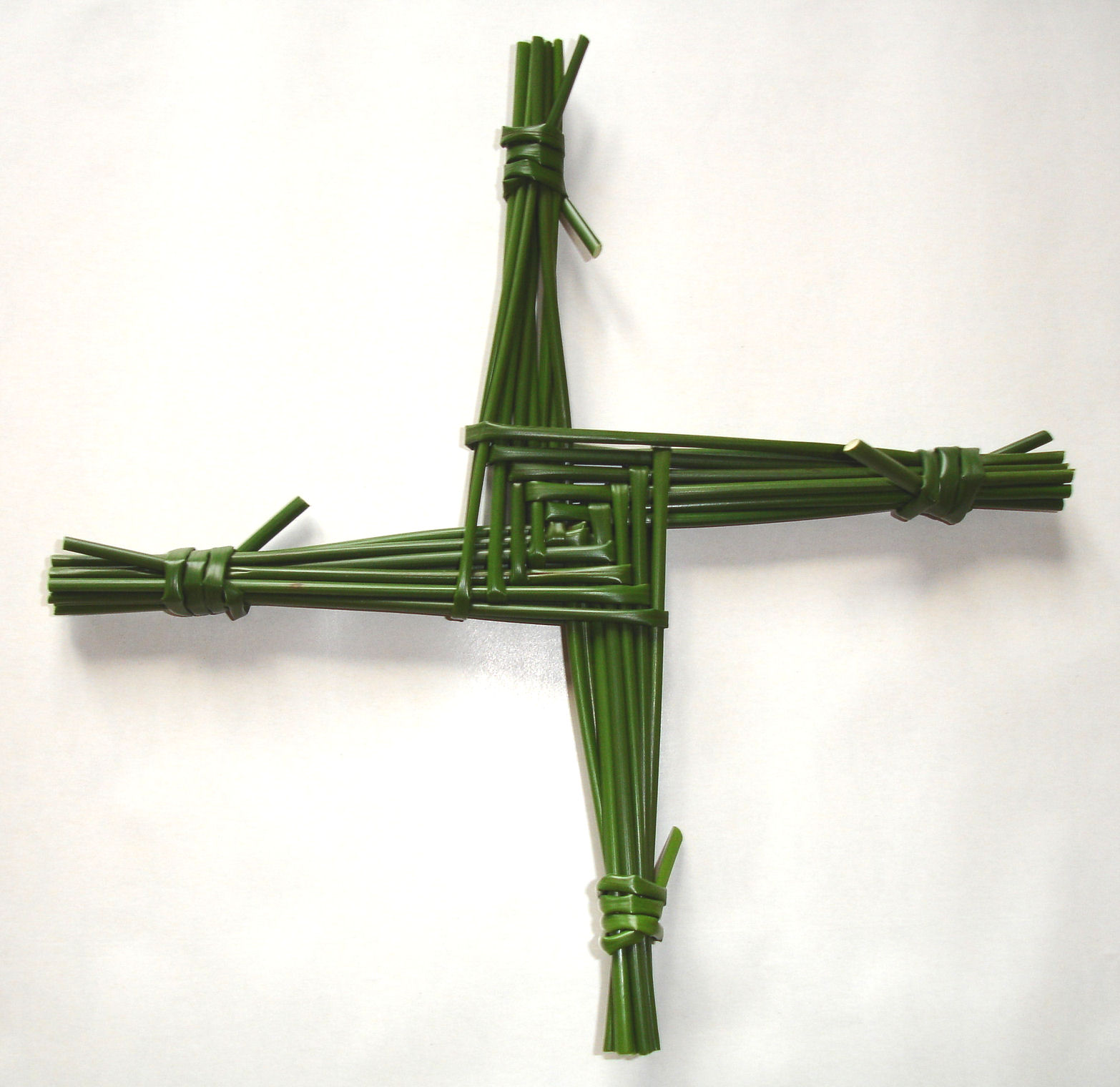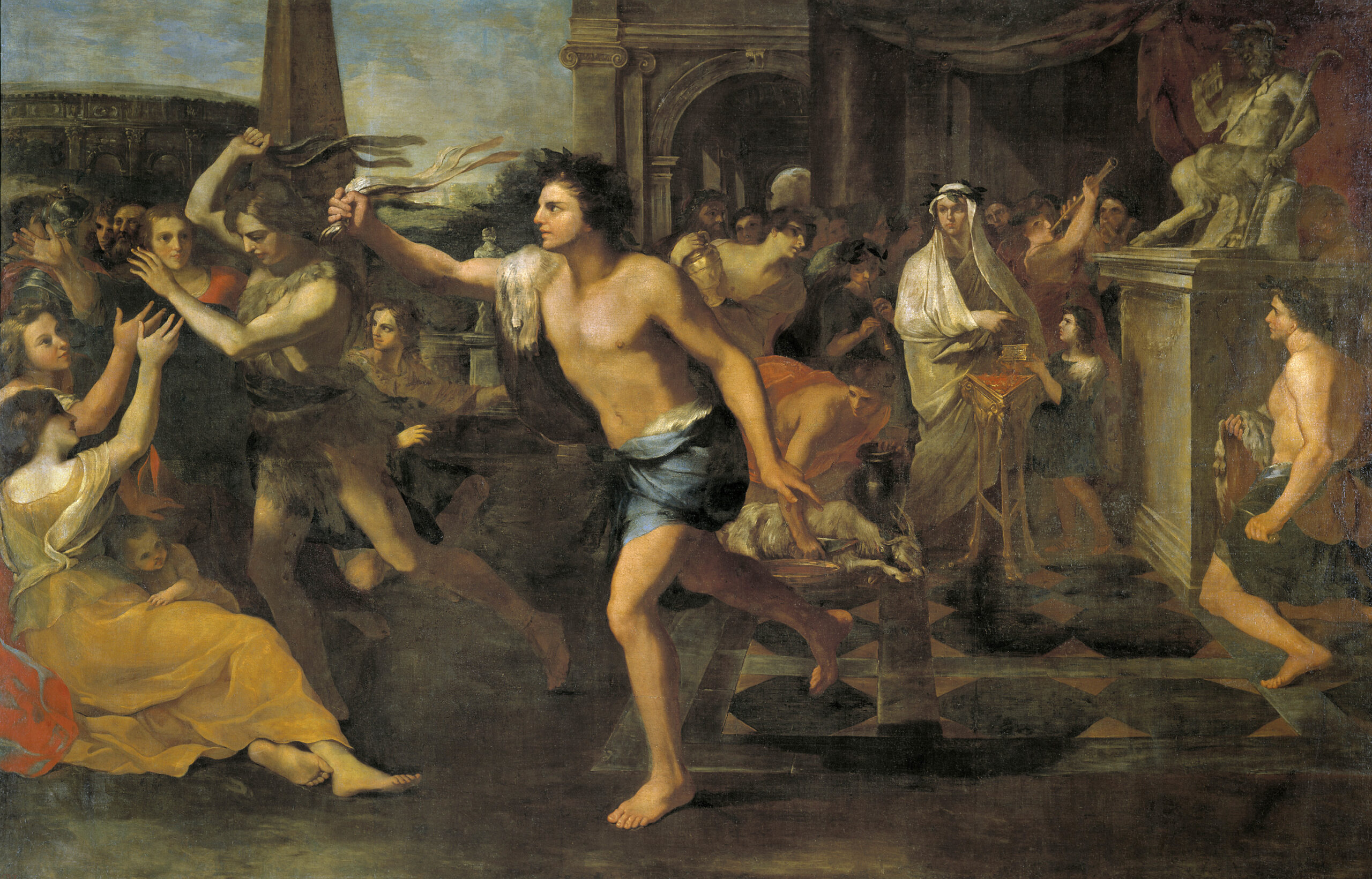
Imbolc dates: February 1st – 2nd
Practices: Lighting candles, Brigid’s Crosses, Spring Cleaning
Herbs and Plants: Snowdrops, Angelica, Basil, Bay Laurel
Colors: White, Green, Red, Yellow
History of Imbolc
Imbolc, also known as Brigid’s Day, is a traditional Gaelic festival marking the beginning of spring. Historically, it was widely observed throughout Ireland, Scotland, and the Isle of Man. The festival of Imbolc occurs on February 1st, approximately halfway between the winter solstice and the spring equinox.
The name “Imbolc,” deriving from Old Irish, is often translated as “in the belly,” a reference to the pregnancy of ewes (female sheep). This interpretation aligns well with the festival’s timing, as Imbolc marks the beginning of the lambing season, a critical period in ancient pastoral communities signaling the renewal of the land’s fertility.
Some scholars suggest an alternative derivation from the term “Imbolg,” meaning “to wash/cleanse oneself,” which signifies the festival’s aspect of purification. This view connects with traditional practices of Imbolc, such as lighting fires and candles, for the cleansing and rejuvenation of nature in anticipation of spring.
Another interpretation is “Oimelc,” which is thought to mean “ewe’s milk,” linking the festival to fertility and nurturing in reference to the lambing season. Additionally, there is a perspective that Imbolc may derive from a term indicative of “bud” or “budding,” signifying the emergence of new life and the first signs of spring.
Each of these interpretations offers a different perspective on the festival, but all emphasize purification, renewal, fertility, and preparation for the coming of spring. By considering these varied meanings, we gain a more comprehensive understanding of Imbolc’s significance in the Wheel of the Year and its continued relevance in modern celebrations.
The goddess Brigid is a figure of immense importance in Celtic mythology. Brigid is the goddess of fire, poetry, healing, childbirth, and unity. With the Christianization of Ireland, many of Brigid’s attributes and rituals were absorbed into the figure of Saint Brigid. As of 2022, Ireland recognizes Imbolc as a national holiday.
Imbolc Rituals
Imbolc celebrates the transition from winter to spring. It’s a festival of purification, renewal, and preparation for the coming of spring. Imbolc traditions offer a window into ancient practices and their relevance in our modern world.
Weather Divination
This tradition is most famously observed today as Groundhog Day in the United States. According to folklore, if the groundhog sees its shadow on February 2nd, it predicts six more weeks of winter; no shadow signifies an early spring. This custom resembles the ancient practice of observing natural signs and animal behavior to foretell the weather, a vital concern for agricultural societies.
The Lighting of Candles
Imbolc is traditionally a time of candle lighting and fire to honor Brigid, the goddess of fire. Lighting candles, a bonfire, or a hearth fire symbolizes the return of warmth and the increasing power of the sun over the coming months.
Brigid’s Cross
These crosses are made from straw and hung in homes to protect them from harm. The cross consists of a woven square in the center with four arms projecting outward.

According to legend, Saint Brigid wove this unique cross from rushes as she explained the Christian faith, transforming a simple symbol into one of spiritual significance. While primarily associated with Christian symbolism, many have come to associate Brigid’s Cross with pre-Christian symbols such as the sun. In this interpretation, the cross might represent the wheel of the year and the turning of the seasons.
Rushes are grass-like plants commonly found in wetlands or bodies of water. They are known for their sturdy, slender stalks, which are ideal for weaving into shapes like the cross. In areas where rushes are not readily available, straw is often used as a substitute.
Spring Cleaning
Spring cleaning during Imbolc is a way to refresh and rejuvenate the home environment, creating a space reflecting the new beginnings and purity that the festival celebrates. Clearing out the old to welcome the new mirrors the natural cycle of the seasons as winter gives way to spring.
Blessing of Seeds and Tools
This tradition involves blessing seeds and agricultural tools, actively preparing for the sowing season, and invoking the fertility of the land. This ritual is a practical and spiritual step towards ensuring a bountiful harvest, directly connecting the process of nurturing growth and abundance.
Poetry and Storytelling
This festival is an ideal time for reciting poems and sharing stories, especially those that celebrate the coming of spring and the lore of the goddess.
Visiting Holy Wells
In some traditions, Imbolc involves visiting springs or holy wells, offering tokens in the hope of health and healing. This practice aligns with another aspect of Brigid, honoring her as a goddess of healing.
In doing so practioners are encouraged to ensure that their practices are not ecologically damaging. Read more: Mystical Ecology: A New Story For A New People
Community Gatherings
Modern Imbolc celebrations often include community events, workshops, and gatherings focused on crafts, environmental stewardship, and spiritual practices connected to the festival.
Environmental Connection
The Earth’s awakening provides a perfect opportunity to engage in activities that honor our environment. Imbolc can be a time for tree planting and actively engaging in the growth and renewal of the season. Nature walks to observe the early signs of spring can help connect us with the subtle changes in the natural world.
Februalia, Lupercalia, and the Origins of Valentine’s Day

The Roman festivals of Lupercalia and Februalia also occurred in February. Lupercalia, a well-known fertility festival, and Februalia, a time of purification, revolve around renewal and preparation for the coming spring.
Valentine’s Day celebrated on February 14th, is often thought to have origins in the ancient Roman festival of Lupercalia. It involved various rites, including the sacrifice of goats and dogs and the use of goat-hide strips, which priests would use to gently slap women and crop fields to promote fertility for the coming year.
As Rome transitioned to Christianity, many pagan festivals were reinterpreted or replaced with Christian celebrations. The feast of Saint Valentine was established by Pope Gelasius I in the 5th century. While the exact origins of Saint Valentine are shrouded in mystery, the day gradually came to be associated with romantic love.
Conclusion
Modern celebrations of Imbolc can include various activities that reflect its historical roots of purification, renewal, and preparation for the upcoming spring.
Suggested practices may include:
- Making Brigid’s Crosses and setting up an Imbolc altar.
- Lighting candles or bonfires.
- Planting seeds or trees in pots, engaging in the Earth’s awakening.
- Writing poetry or performing rituals that invoke creativity.
- Undertaking a physical or spiritual spring cleaning.
- Preparing a feast with foods.
- Reflecting on personal growth and setting intentions for the coming season.
Imbolc invites us to actively engage with the life around us as we transition from winter into spring. This festival offers a unique opportunity to embrace the new life preparing both in the natural world and within ourselves.
In this time of renewal, we are reminded of the connection we share with the local ecology. The changing seasons bring subtle and profound shifts in our surroundings. Imbolc encourages us to actively engage in these changes and observe the early signs of spring.
In celebrating Imbolc, we carry renewal into our daily lives. By engaging with our ecology, we honor ancient traditions and contribute to a sustainable, harmonious relationship with our planet. In doing so, this festival becomes a bridge connecting us to the past, present, and future in the cycle of the seasons and the potential for growth and abundance.
Toutā Caillte is entirely funded by our readers. Please consider donating via my Patreon to fund future writing and ecological projects. Thanks!